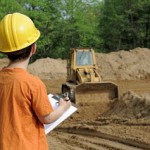Green Building – Site Clearing and Air Quality
The Northwest Clean Air Agency is the regional organization responsible for issuing burn permits for the disposal of site clearing debris in Island County and our surrounding jurisdictions. Their mandate comes from the State of Washington Clean Air Act of 1967.
The site that we are clearing in the short video above is outside of an Urban Growth Area, which means that we have the zoning to apply to The Agency for a burn permit. This job also started at the beginning of the rainy season when burn bans are typically lifted and more permits granted. Burning however, essentially decreases air quality at all times of the year so for several years running we have ignored weather and zoning and instead used this amazing mobile grinder. The machine is rented from an Island company. Our clients feel good about having their clearing debris chipped versus being burned and we all get to enjoy watching the giant machine in action. The bucket is about 15′ in diameter. Using their excavator an operator will load the bucket with stumps and branches where they are quickly churned into a pile of wood chips. This pile grew to be about 20′ high in just a few short hours. We then push the pile around the site with a bulldozer, giving the site greater stability and a nicer appearance. A client may also choose to leave part of the pile to be used later in their landscaping.
Note that debris is comprised of the stumps and branches from the fallen trees, plus any smaller vegetation that we clear. How the trunks of the trees are handled is enough info for another blog post entirely, which we will get to, but it will likely not involve such a cool video.
Attached is a link to the Northwest Clean Air Agency. Their website is full of information about air quality and burn bans.
http://www.nwcleanair.org/index.asp


